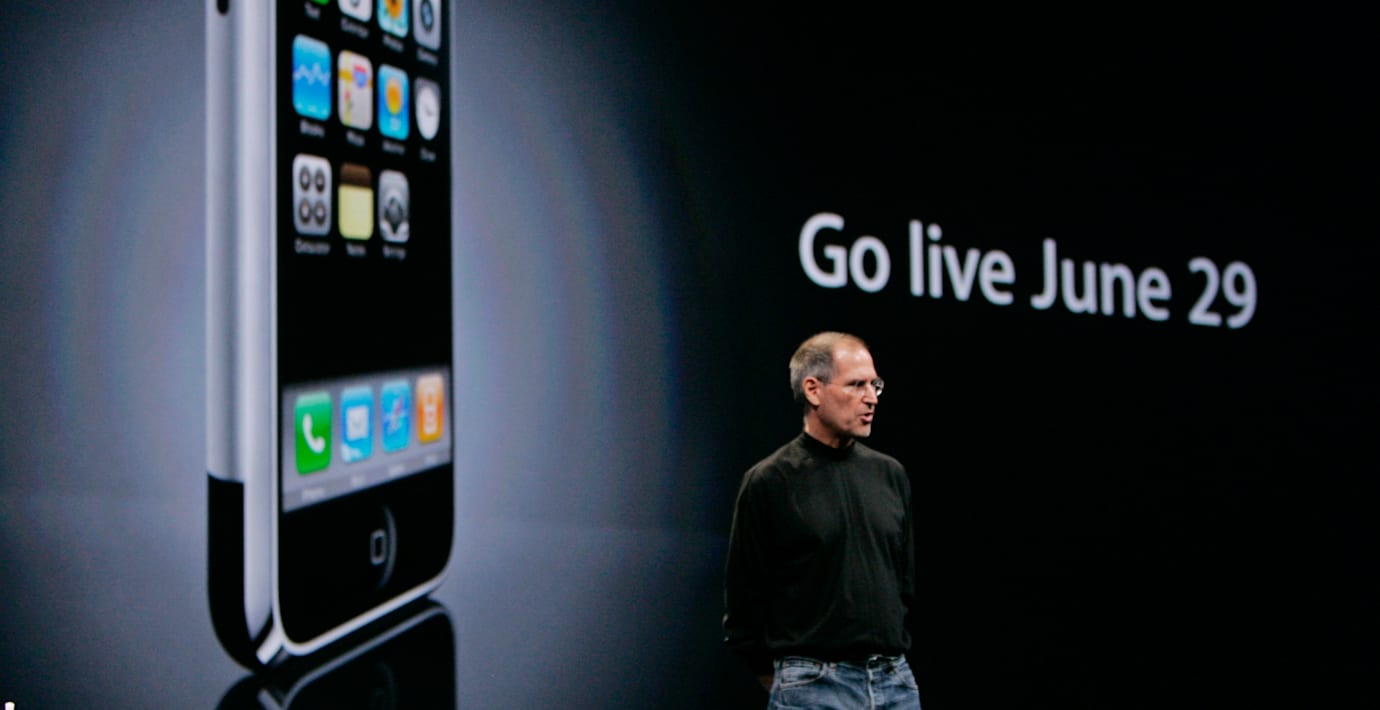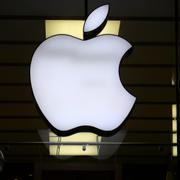
Apple blev beroende: ”Svårt att hålla ihop”
Den första generationens Iphone släpptes i slutet av juni 2007. Tioårsjubileet uppmärksammas av många medier som beskriver hur den smarta telefonen har förändrat världen. 1,3 miljarder Iphones har sålts vilket gör produkten till en av de mest sålda i historien, skriver Wall Street Journal.
Samtidigt har telefonen förändrat Apple som företag och ställer nu bolaget inför stora utmaningar. Apple har blivit beroende av produkten som genererar två tredjedelar av dess omsättning och Iphonen överskuggar allt annat bolaget gör.
– Företaget har växt i alla dimensioner och att hålla ihop det är väldigt väldigt svårt, säger techanalytikern Horace Dediu, tidigare chef på Nokia.
bakgrund
IPhone
Wikipedia (en)
iPhone ( EYE-fohn) is a line of smartphones designed and marketed by Apple Inc. They run Apple's iOS mobile operating system. The first generation iPhone was released on June 29, 2007, and there have been multiple new hardware iterations since.
The user interface is built around the device's multi-touch screen, including a virtual keyboard. The iPhone has Wi-Fi and can connect to cellular networks. An iPhone can shoot video (though this was not a standard feature until the iPhone 3GS), take photos, play music, send and receive email, browse the web, send and receive text messages, follow GPS navigation, record notes, perform mathematical calculations, and receive visual voicemail. Other functionality, such as video games, reference works, and social networking, can be enabled by downloading mobile apps. As of January 2017, Apple's App Store contained more than 2.2 million applications available for the iPhone.
Apple has released ten generations of iPhone models, each accompanied by one of the ten major releases of the iOS operating system. The original 1st-generation iPhone was a GSM phone and established design precedents, such as a button placement that has persisted throughout all releases and a screen size maintained for the next four iterations. The iPhone 3G added 3G network support, and was followed by the 3GS with improved hardware, the 4 with a metal chassis, higher display resolution and front-facing camera, and the 4S with improved hardware and the voice assistant Siri. The iPhone 5 featured a taller, 4-inch display and Apple's newly introduced Lightning connector. In 2013, Apple released the 5S with improved hardware and a fingerprint reader, and the lower-cost 5C, a version of the 5 with colored plastic casings instead of metal. They were followed by the larger iPhone 6, with models featuring 4.7 and 5.5-inch displays. The iPhone 6S was introduced the following year, which featured hardware upgrades and support for pressure-sensitive touch inputs, as well as the SE—which featured hardware from the 6S but the smaller form factor of the 5S. In 2016, Apple unveiled the iPhone 7 and 7 Plus, which add water resistance, improved system and graphics performance, a new rear dual-camera setup on the Plus model, and new color options, while removing the 3.5 mm headphone jack found on previous models.
The original iPhone was described as "revolutionary" and a "game-changer" for the mobile phone industry. Newer iterations have also garnered praise, and the iPhone's success has been credited with helping to make Apple one of the world's most valuable publicly traded companies.
Omni är politiskt obundna och oberoende. Vi strävar efter att ge fler perspektiv på nyheterna. Har du frågor eller synpunkter kring vår rapportering? Kontakta redaktionen



